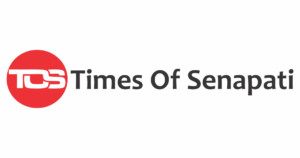NEW DELHI, Jan 1: In a significant boost to the Indian middle class, Finance Minister Nirmala Sitharaman on Saturday announced that individuals with annual incomes up to Rs 12 lakh will no longer be required to pay income tax. Salaried taxpayers will benefit from a higher threshold of Rs 12.75 lakh, including the standard deduction.
The announcement came as part of the Union Budget 2025-26, where Sitharaman outlined the revised tax rate structure under the new tax regime. The new tax structure is designed to benefit middle-class families, with tax rates structured as follows: Rs 0-4 lakh (zero tax), Rs 4-8 lakh (5 percent), Rs 8-12 lakh (10 percent), Rs 12-16 lakh (15 percent), Rs 16-20 lakh (20 percent), Rs 20-24 lakh (25 percent), and incomes above Rs 24 lakh taxed at 30 percent.
Sitharaman also announced several measures aimed at making the tax system more efficient and taxpayer-friendly. She revealed that tax deduction at source (TDS) rates would be rationalised, and the limit for TDS deductions for senior citizens would be doubled to Rs 1 lakh. Additionally, the time limit for filing updated returns will be extended from two years to four years.
Other key proposals include raising the threshold for TDS on remittances under the Liberalised Remittance Scheme (LRS) from Rs 7 lakh to Rs 10 lakh, and increasing the annual TDS limit on rent from Rs 2.4 lakh to Rs 6 lakh. In a significant move, the delay in payment of Tax Collected at Source (TCS) up to the due date would be decriminalised, and TCS on remittances for education loans has been waived.
The Union Budget also introduced provisions to exempt withdrawals from National Savings Scheme (NSS) accounts on or after August 2024 from tax, further benefiting taxpayers.
The ongoing Budget Session of Parliament commenced on January 31 and is being conducted in two phases. The first phase concludes on February 13, while the second phase will begin on March 10 and end on April 4.

